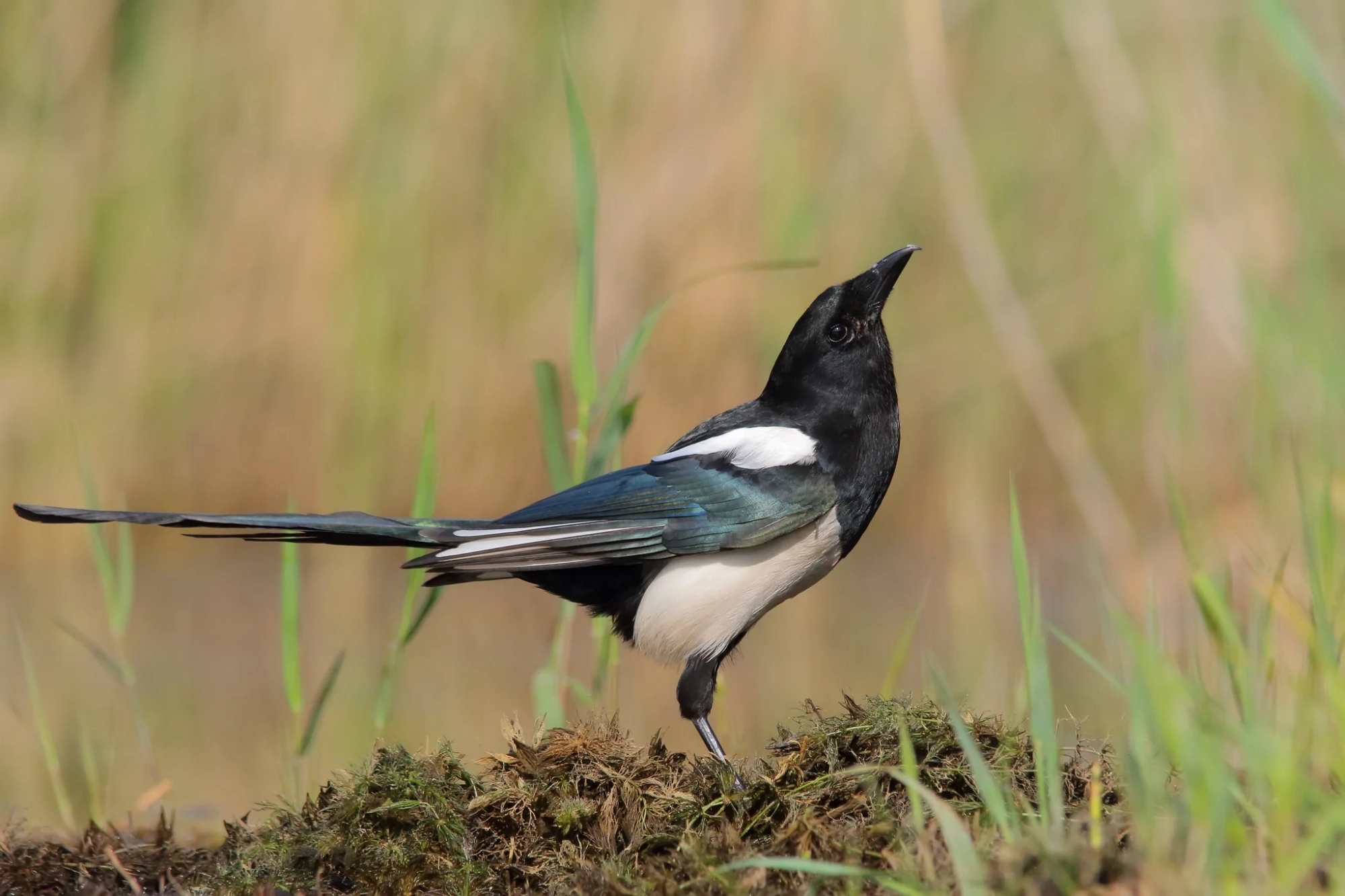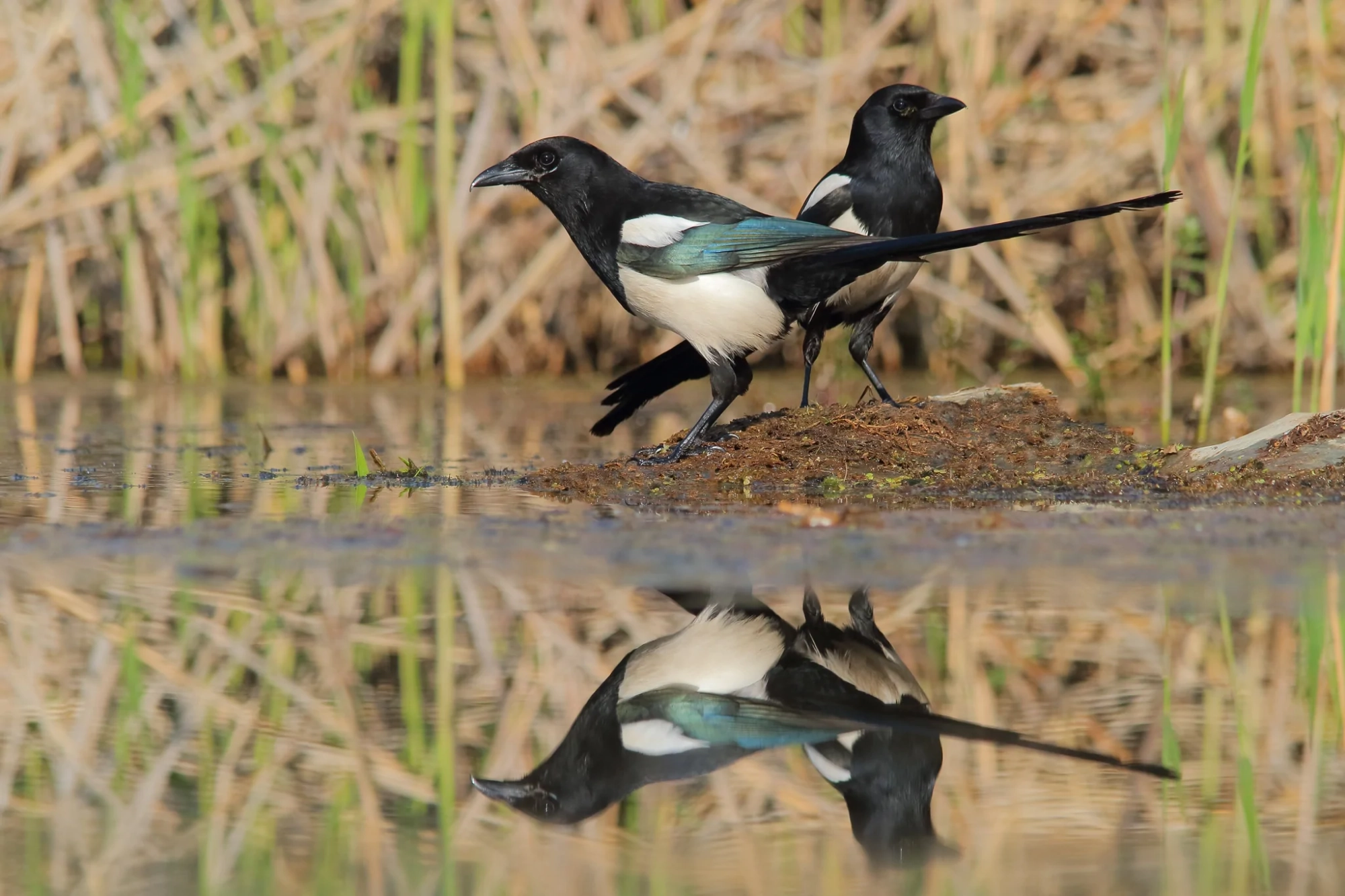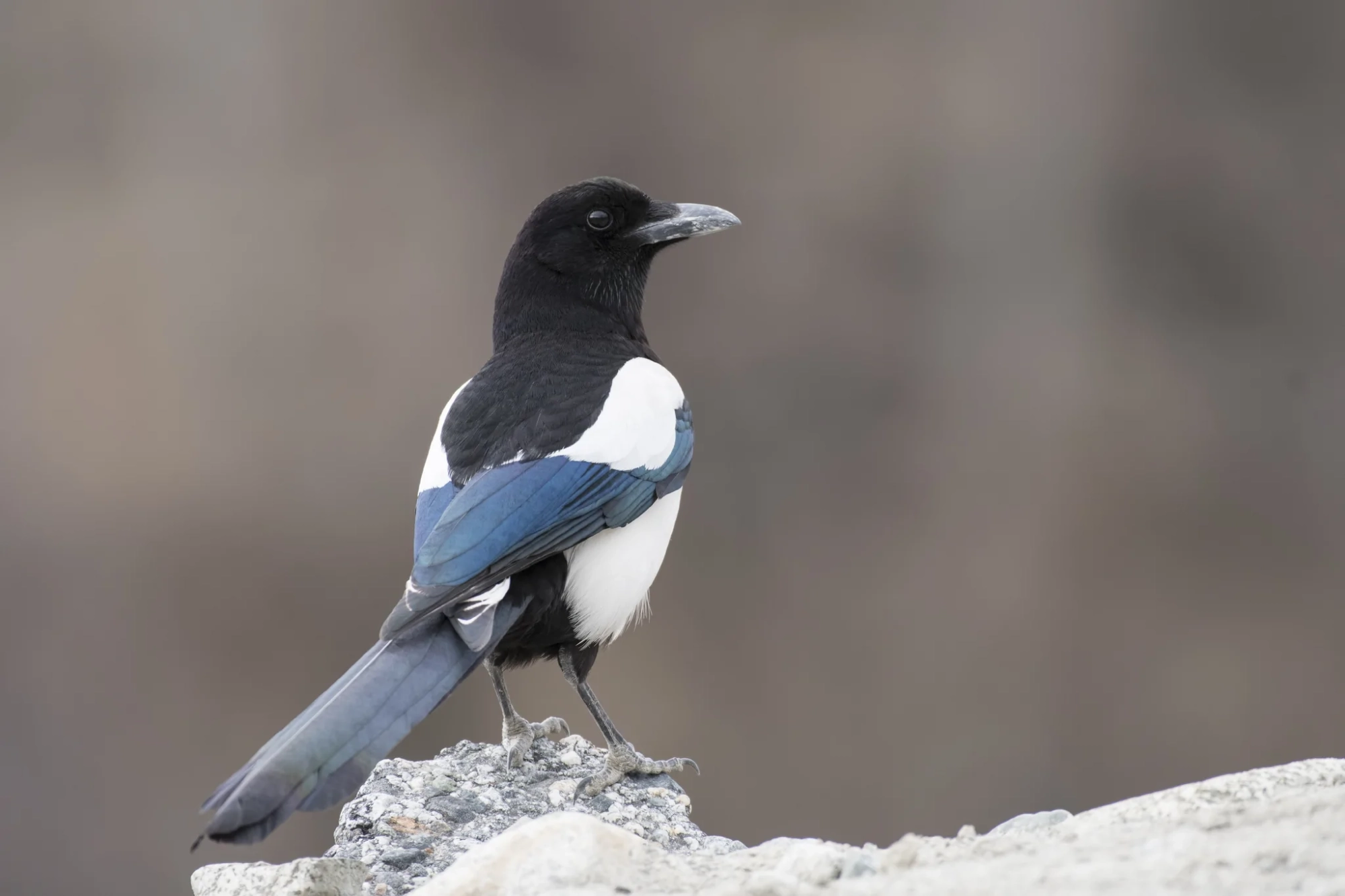Eurasian Magpie
Eurasian magpie or common magpie (Pica pica) is a resident breeding bird throughout Europe, much of Asia and northwest Africa. It is one of several birds in the crow family designated magpies, and belongs to the Holarctic radiation of “monochrome” magpies. In Europe, “magpie” is used by English speakers as a synonym for the European magpie: the only other magpie in Europe is the Iberian magpie (Cyanopica cooki), which is limited to the Iberian peninsula.
Distribution:
The range of the magpie extends across temperate Eurasia from Spain and Ireland in the west to the Kamchatka Peninsula and Taiwan in the east. There are also populations in northwest Africa and on Mediterranean islands. The species has been introduced in Japan on the island of Kyushu.
Interesting Facts:
The Eurasian magpie is one of the most intelligent birds, and it is believed to be one of the most intelligent of all animals. The expansion of its nidopallium is approximately the same in its relative size as the brain of chimpanzees, orangutans and humans.
Names:
Common Magpie and Eurasian Magpie.
Description:
The adult male’s head, neck and breast are glossy black with a metallic green and violet sheen. The belly and shoulder feathers)are white and the wings are black glossed with green or purple.The primaries have white inner webs, conspicuous when the wing is open. The tail is black, glossed with green and reddish purple. The legs and bill are black and the iris is dark brown. The plumage of the sexes is similar but females are slightly smaller. Juveniles resemble the adults, but at first arewithout much of the gloss on the sooty plumage.
Breeding :
In the courtship display males rapidly raise and depress their head feathers, uplift, open and close their tails like fans, and call in soft tones quite distinct from their usual chatter. The loose feathers of the flanks are brought over the primaries, and the shoulder patch is spread so the white is conspicuous, presumably to attract females. Short buoyant flights and chases follow. Three to as many as many as ten pale blue-green with close specks and spots of olive brown eggs are laid. Incubation by the female is 21-22 days. Fledging is about 27 days.
Diet for Eurasian Magpie:
The magpie is omnivorous, eating young birds and eggs, insects, acorns, grain, and other vegetable substances.
In Captivity: Paradise Earth Softbill Blend and Dried Insects.






